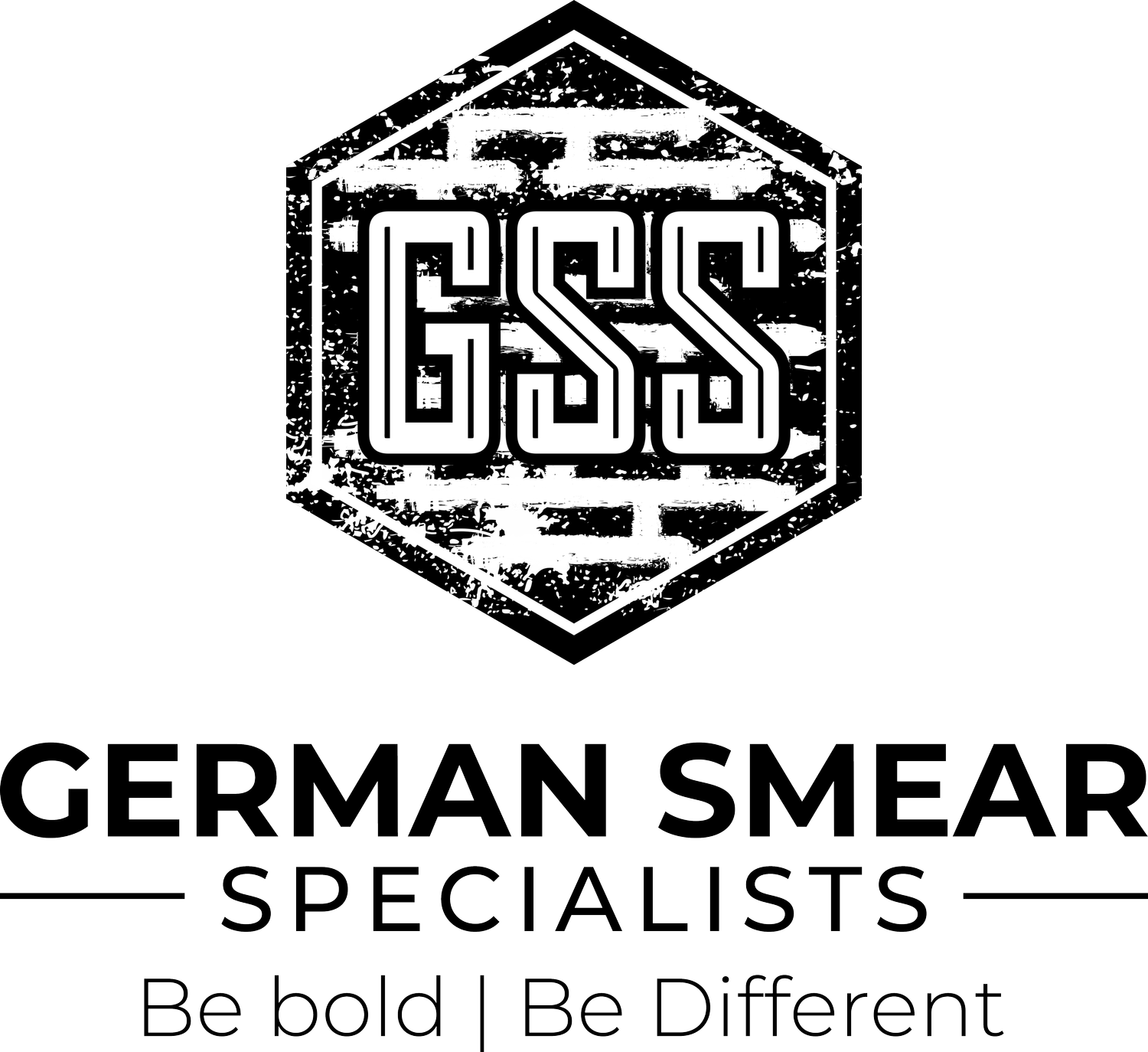Why German Smear Is the Ultimate Low-Maintenance Brick Finish
Introduction
German Smear, a centuries-old masonry technique from Europe, has become a go-to option for homeowners seeking a rustic aesthetic without the hassle of constant upkeep. Its combination of classic charm, longevity, and virtually no required maintenance makes it an ideal choice for both residential and commercial properties. In this blog, we’ll uncover the reasons why German Smear is considered the most low-maintenance brick finish available today.
What Makes a Brick Finish “Low-Maintenance”?
Low-maintenance brick finishes are those that require minimal cleaning, no reapplication, and resist weathering, discoloration, or deterioration over time. Common alternatives like painted brick often suffer from peeling, cracking, and fading due to exposure to UV rays and moisture. German Smear avoids these pitfalls by using mortar, which bonds permanently to the brick and ages naturally. Its rough, textural finish actually improves in appearance as it weathers, unlike smooth painted surfaces.
Durable Materials That Withstand Time and Weather
German Smear uses cement-based mortar, typically composed of Type N or Type S mortar mix—materials known for their durability and structural strength. According to the Portland Cement Association, these mortars are designed to resist cracking, weather-related erosion, and freeze-thaw cycles. Unlike paint or limewash, which may deteriorate or flake off over time, mortar weathers gracefully, forming a patina that enhances the finish rather than detracting from it.
No Repainting or Sealing Required
Unlike traditional painted brick—which may require repainting every 5–10 years—German Smear is a one-and-done application. The mortar finish becomes part of the masonry and does not require sealing or repainting. This translates to significant long-term savings. For instance, HomeAdvisor reports that repainting a brick house costs between $3,000 and $10,000, a recurring cost avoided entirely with German Smear (source).
Resistant to Mold, Mildew, and Efflorescence
Because mortar is breathable, it allows moisture to evaporate naturally from the brick, reducing the risk of trapped moisture that leads to mold and mildew. Additionally, German Smear acts as a physical barrier, preventing direct exposure to the elements. According to Brick Industry Association (BIA) guidelines, breathable finishes help extend the life of exterior masonry and mitigate issues like efflorescence (source).—the white, powdery buildup caused by soluble salts.
How German Smear Adapts to Aging and Brick Wear
One of German Smear’s standout benefits is how it accommodates aging and imperfections in brickwork. Unlike paint, which highlights cracks and chips, German Smear disguises them, offering a naturally weathered, old-world look. For older homes or damaged facades, it can even help reinforce weak or crumbling areas, adding an extra layer of structural integrity when applied correctly.
Minimal Seasonal Maintenance
The beauty of German Smear is that it requires little seasonal care:
Inspection: Once or twice a year for cracks or dislodged mortar
Cleaning: Light brushing or low-pressure washing to remove dirt
Compared to repainting or limewashing entire surfaces, these small tasks are negligible in both time and cost.
Custom Color That Doesn’t Fade
While most people associate German Smear with classic white or off-white finishes, companies like German Smear Specialists offer custom-tinted mortar options in colors such as terra cotta, charcoal, blue-gray, beige, and even luminescent tones. Because the color is integrated into the mortar, it won’t peel or fade like surface-applied paints. This adds long-term aesthetic value with no need for future touch-ups.
Long-Term ROI: Time and Money Saved
Over a 10–15 year period, homeowners can save thousands of dollars in maintenance by choosing German Smear over paint. A study by Angi notes that exterior painting must be repeated roughly every 7 years, while German Smear can last 20+ years with minimal attention (source). For homeowners planning to stay long-term—or looking to increase resale value—it offers a clear ROI in both curb appeal and reduced upkeep.
Ideal for Harsh Climates and Busy Homeowners
German Smear performs well in varied climates, including those with heavy rain, snow, or sun exposure. Its resilience makes it particularly attractive for:
Busy homeowners who want a “set it and forget it” finish
Rental property owners seeking low-maintenance exteriors
Historic homes needing restoration without modern coatings
Its ability to protect and beautify in all seasons adds to its universal appeal.
German Smear vs Competing Techniques
German Smear is clearly the most resilient and forgiving of the options, making it the preferred choice for long-term investment.
Conclusion
German Smear combines classic beauty with true low-maintenance performance. It’s ideal for homeowners who want enduring curb appeal, protection from the elements, and a finish that looks better with age. Compared to other techniques, it offers unrivaled durability and cost efficiency.
Want to make the switch to a low-maintenance exterior? Contact German Smear Specialists today for a consultation and discover how effortless home upkeep can be.
FAQs
Does German Smear ever need to be redone?
Only in rare cases or if poorly applied. When done correctly, it lasts 20+ years.
Can it be power washed?
Yes, It is recommended to be power washed every 1-2 years to keep it clean from mold/algae/dirt build up.
What’s the average lifespan of a German Smear finish?
20–30 years or more with proper installation and minimal maintenance.source
Is it safe for humid or salty environments?
Yes. Its breathable nature makes it ideal for coastal or humid climates.
Will color-tinted mortar still be low-maintenance?
Absolutely. Because the color is embedded in the mortar, it doesn’t fade or require repainting like traditional finishes (source).


